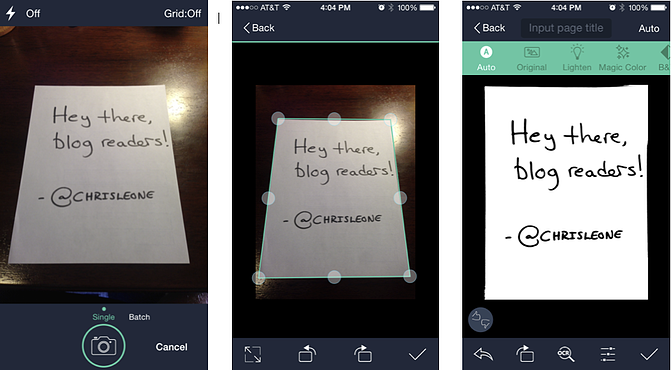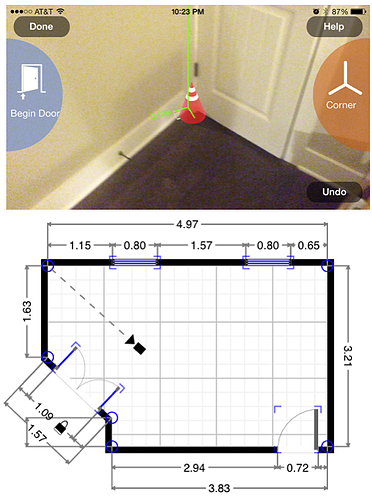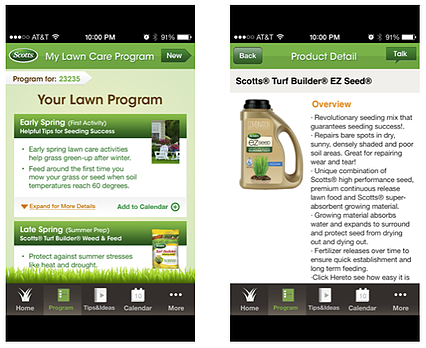Consider this: where do brands typically invest in their customers’ experience? If they’re like most, they invest in their website, in their store, in the product/service, and in customer service. What do all of these have in common? They typically exist very close to the point of purchase. It makes sense to invest your time, energy, and creativity at ground zero, but once everyone starts to do that, how special can you be? How much can you really stand out?
Enter: utility marketing. Utility marketing is the concept whereby a brand intersects the consumer at the moment of a non-commercial need, addresses their need, becomes a part of their life, and remains with them for when they’re ultimately ready to make a purchase.
It's a fascinating concept, and the possibilities are endless.
The following are four utility marketing opportunities that demonstrate how this concept could be put into practice.
App: BabyCenter Pregnancy Tracker
Description: This app allows expectant mothers to track their pregnancy week by week up to their baby’s birth. The app is rich with information, videos, and education, guiding the user through this special time in her life.
This kind of utility would be a natural and logical fit for any brand that markets to new mothers. Johnson & Johnson is making a small effort by sponsoring the app, by why do they not OWN the app? If not own, why don’t they develop something even better? If a brand can offer nine months of exceptional utility during a woman’s pregnancy, who do you think that mother will likely turn to when it’s time to buy?
App: CamScanner
Description: Ever snap a photo of a paper document in order to get a digital record on your phone? I know I have. CamScanner takes this concept to a new level, recognizing the pitch and angle of your photograph, and then flattening the image into a digital 2D document.
Dropbox and Box, two big brands duking it out for cloud storage and online backup market share (which, of course, includes digital documents), could offer incredible utility to users with an app like this. By getting consumers to associate digitized documents with their brand, an eventual decision between online storage and backup companies will be an easy one.
App: MagicalPad
Description: This nifty app can measure and draw a floor plan using the camera on your smartphone. The user can add features such as doors, windows, and staircases along with tweaking the dimensions to make them as accurate as possible. Below is my attempt at creating a floor plan for my office.
What if I could take this floor plan and turn it into a 3D rendering? What if I could then paint the walls and add furniture? What if Ikea or Pottery Barn or Crate and Barrel let me place their furniture into my 3D rendering? What if I could then purchase the products right within the app and have them shipped to my house? Now that would be a fun way to decorate a room.
App: My Scotts Lawn
Description: Scotts, maker and seller of lawn card products, offers a free app designed to “create a lawn care program just for you.” The app offers tips, alerts, resources and suggestions for keeping up a healthy lawn.
I love the concept of this app. Where Scotts falls way short is in the over-the-top promotion of their own products. Their “utility” is matching you with the most appropriate Scotts product for your situation. In other words, you’re downloading your own personal Scotts salesperson (how exciting does THAT sound?).
Scotts’ focus should have been on delivering the most informative, useful, intelligent app in the world on maintaining a healthy lawn and landscape. For example, they could could tap into a weather database, know that my lawn hasn’t seen rain in over a week while temperatures consistently hit 95+ degrees, and tailor their messaging and alerts appropriately. Using the same weather data, they could tell me that I shouldn’t put seed down this Saturday because there’s heavy rain in the forecast on Sunday that could wash it all away. Then, ever so subtly, they could recommend their products based on my personal conditions.
What’s become clear is that in order to win in the digital world, brands have to be willing to give more. Utility marketing is a way to think outside the box and offer something customers aren’t used to getting from a brand. I expect that in the next several years, we’ll see more brands offering this type of utility, either through their own development or by acquiring apps that have already developed a following.
Consider this: where do brands typically invest in their customers’ experience? If they’re like most, they invest in their website, in their store, in the product/service, and in customer service. What do all of these have in common? They typically exist very close to the point of purchase. It makes sense to invest your time, energy, and creativity at ground zero, but once everyone starts to do that, how special can you be? How much can you really stand out?







Agree, disagree, or just have something to add?
Leave a comment below.